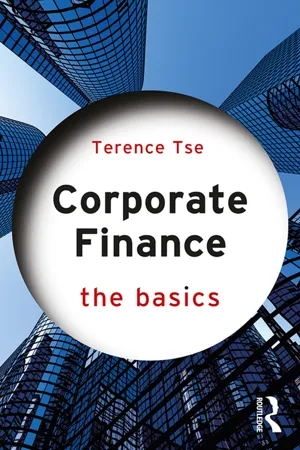Debt
Debt refers to the amount of money borrowed by an individual, organization, or government from another party with the agreement to repay the borrowed amount along with interest at a later date. In economics, debt plays a crucial role in financing activities, stimulating economic growth, and managing financial risks. It can be used for various purposes, such as investment, consumption, and managing cash flow.
6 Key excerpts on "Debt"
- eBook - ePub
- Ensar Yılmaz(Author)
- 2020(Publication Date)
- Routledge(Publisher)
...Hence the incorporation of Debt into economic analysis seemed trivial. However, we learn each time from austere times (during crises) that Debt is critical in terms of triggering the problems and their deepening. Therefore, Debt is a more complex issue and not a simple zero-sum game. Economists have started to deal with new complications by including Debt in their economic models such as heterogeneity between Debtors and creditors and discontinuity arising from collapse in economic relations. The historical evidence shows the dangers of Debt. The extent of these dangers created by increased Debt depend on who has the Debt (firms, banks, households or governments) and what kind of Debt they have—depending on maturities (short or long) and financing types (loans or bonds) and types of currencies (domestic currency or foreign currency). In many diverse countries and periods, combinations of these forms can come to the fore. In one country, government Debt can be a big problem, but in another country it can be private Debt and with a short-term maturity, and it can even maybe be borrowed in foreign currency. Hence several forms of borrowing can emerge in different countries, so it can reveal itself in different problems. Until the Asian crisis in 1997, economists were widely concerned with government Debt. Along with this crisis, private Debt became critical in understanding the crisis. The global crisis in 2007–2008 also showed that private-sector liabilities, namely household Debt (the bulk of which was mortgages) and financial institutions (especially banks), was too high. In recent years, it also seems that household and corporate Debt in many countries, especially in rich countries, have increased as a percentage of GDP. Households owed to financial firms, non-financial firms owed to financial firms and further at an increasing rate financial firms owed to financial firms...
- eBook - ePub
- Johnna Montgomerie(Author)
- 2019(Publication Date)
- Polity(Publisher)
...Current economic understandings of Debt represent it as a stock of outstanding claims against a flow of household income. This static representation obscures the ways in which Debt acts as a transformative force. We can observe the effects of Debt’s presence as it changes and reconfigures the political economic space around it. Debt has agency to effect change; it is not just a static stock of outstanding balances set against a flow of anticipated interest payments. Much like water, Debt is a force with the capacity to instigate change in its environment. The power of finance in daily life is not confined to macroeconomic structures; it is mediated through cultural conversations that make finance the legitimate means by which individuals access and participate in the economy (Langley 2008). Debt has many entanglements in everyday life. It can be a source of wealth, consumption and welfare, but it can also be a source of harm and material loss. When we look closely at the sites where Debt is entangled in the daily lives of households, we find mortgages to access housing, student loans to access education, consumer Debts to fund spending and to provide a safety net. These sites are the material connection with the profit centres of the global financial system; and rising inDebtedness gives us a glimpse of the limits of Debt-driven expansion. The power relations of Debt are transmitted through a variety of media that create dependencies. The demands of Debt are made via legal and moral claims, which trigger distinct emotions like shame and fear, but also via the imposition of conditions of market citizenship, such as having a good credit rating. When we think about the problems (or the harm) that Debt causes, these are both ‘big-picture’ economic problems and ‘small-scale’ personal ones, because Debt is a social force acting upon people...
- eBook - ePub
Fear and Greed
Investment risks and opportunities in a turbulent world
- Nicolas Sarkis(Author)
- 2012(Publication Date)
- Harriman House(Publisher)
...The principal cost has been that of bailing out industries stricken by the credit crunch: the banking sector in the UK and the car-making, mortgage-lending and banking sectors in the US. This is also largely true for the many other countries across the developed world where public Debt has spiralled since 2007. Household Debt Of course, government inDebtedness is only one part of the problem today. Companies and households in numerous developed economies took on enormous amounts of Debt in advance of the crisis. It is much harder to make sense of this Debt-binge by comparing it to past episodes because data for private inDebtedness going back in time is much scarcer than figures for government borrowing. The Debt-load of US households – for which we have some of the fullest data – has risen from just under a quarter of GDP in 1951 to a high of 101.6 per cent in late 2009. The long-term trend has clearly been towards ever-increasing amounts of personal Debt, as can be seen in Chart 2.2. Britain, too, has seen households progressively take on more and more obligations over the long run. And in very recent decades, consumers in Spain, France and South Korea have followed their lead. Chart 2.2 – US Household Debt as a percentage of GDP, 1951 to 2011 Source: US Flow of Funds Large-scale household borrowing is most probably a modern phenomenon. Traditionally, personal inDebtedness had a great deal of social stigma attached to it. In Victorian Britain – as well as in other societies around the world – those unable to pay their taxes, rent or Debt could be thrown into Debtors’ prison. But even after the abolition of Debtors’ prison in 1869, social attitudes towards Debt remained conservative and even disapproving well into the 20th century. Private sector Debt While the data for the private sector may not be anything like as long and detailed as that for government borrowing, there is anecdotal evidence of corporate borrowing manias over time...
- eBook - ePub
Keystroke Capitalism
How Banks Create Money for the Few
- Aaron Sahr, Sharon Howe(Authors)
- 2022(Publication Date)
- Verso(Publisher)
...While corporate Debt is increasing by around 50 percentage points, private household Debt has doubled. 25 In the US, this process began much earlier, notably with the expansion of credit card networks in the 1960s – the flip side of the increased ‘incorporation’ of workers into the financial system. 26 The bulk of borrowing in the non-financial sector in OECD countries comes not from governments or companies, therefore, but from consumers. 27 Over the past decades, private household Debt has risen significantly not only in proportion to disposable income, but also relative to economic output as a whole – that is, the annually generated sum out of which Debt repayments and incurred interest must come. 28 In 2014, private households worldwide were inDebted to the tune of 64 percent of nominal global output. 29 In purely quantitative terms, then, the expansion of financial assets relative to economic output in the world’s advanced economies is due to a deepening and widening demand. While lending seems to have become increasingly profitable, so too has the practice of financing one’s own spending through borrowing. This double-edged phenomenon can be attributed to a fertile climate for the production of financial assets that has emerged within the OECD since the 1980s. This climate has three components: The first is a change in the relationship between states and their respective financial systems, and indeed in the global financial system as a whole. The second relates to socio-technical innovations within the financial services industry itself, which are radically increasing the flexibility of supply and demand. And the third is a specific appreciation/depreciation dynamic that constantly fuels both demands. 30 From Control to Protection The first component of this fertile financial climate is the changed relationship between politics and finance...
- eBook - ePub
Markets Never Forget (But People Do)
How Your Memory Is Costing You Money--and Why This Time Isn't Different
- Kenneth L. Fisher, Lara W. Hoffmans(Authors)
- 2011(Publication Date)
- Wiley(Publisher)
...But the payoff can be worth it. A mining firm is just going to require more Debt than, say, a services firm. There, the costs are more limited to hiring smart people and putting a roof over their heads. Since most folks fathom all this, corporate Debt doesn’t normally bug them so much. What bugs them is personal Debt and, more than that, government Debt. This book isn’t about preaching how much Debt you or anyone else personally should have. That is up to you, your spouse, your creditors and whatever spiritual adviser you cotton to. But it’s the same concept as corporate Debt—used responsibly, the benefits are real. You (probably) used leverage to buy a house, a car, a college education maybe. Debt for a college education can be very economic. Yet we all know there are real-world consequences to having too much Debt—but despite widespread assumption, there’s no fact-based evidence society overall is recklessly over-inDebted. For example: Overall Debt service in America as a percent of income has fallen steadily in recent years and hasn’t been this low since 1995. 8 Few fathom that, and it’s almost never mentioned in media. No doubt, some reading this will say, “Well, yes, but this time it’s different.” But people always think this time is different (see Chapter 1). This is the part where people can’t remember that just last month, last year, last decade, they had identical sets of concerns that failed to materialize or failed to be as big as feared. The fear the world is dangerously inDebted is nothing new. Through history, individually, people run into trouble. Even disastrously! But societally, we carry on. This chapter focuses largely on government Debt because it’s government Debt people most fear will tank the economy, bring down stocks and leave the country a smoldering ruin...
- eBook - ePub
- Terence C.M. Tse(Author)
- 2017(Publication Date)
- Routledge(Publisher)
...5 Debt Chapter Overview In general, companies can resort to two major types of capital to finance their capital expenditure. They can sell shares, essentially giving part of the company away in exchange for capital injection into the business, or they can take on Debt (i.e. borrow money). Debt is the focus of this chapter. With Debt, in return for receiving an immediate loan, a company will typically make regular interest payments and pay back the borrowed sum when it is due. Since the lenders can expect to receive a predetermined amount on a regular basis, Debt as a product is often called fi xed income. This chapter examines the two most common forms of Debt: bank loans and bonds. Subsequently, it discusses the concept of financial leverage and the implications for companies of using Debt. Bank Loans Bank loans as a financing possibility are easy to understand. Individuals and companies can walk into a bank and borrow a certain amount of money, promising to pay interest at an agreed time and frequency. They also promise to return the original loan when it is due. So, if a business takes out a bank loan of £10,000 for 1 year and the bank charges 7 per cent interest, 365 days from now the business must pay the bank both £700 (£10,000 × 7%) in interest and the £10,000 taken out in the first place. This is all rather simple. However, here is a trickier question: is the lending bank an investor in the business? The answer is yes. You may recall that Chapter 1 explained that the income statement of any business shows that lenders, together with shareholders/owners, make up the two groups of investors. Why are lenders investors when they are not becoming a part-owner of the business? Because making an investment does not necessarily require ownership. We also discussed in Chapter 2 that an investment is an opportunity to potentially get more money back than what you put in in the first place...





